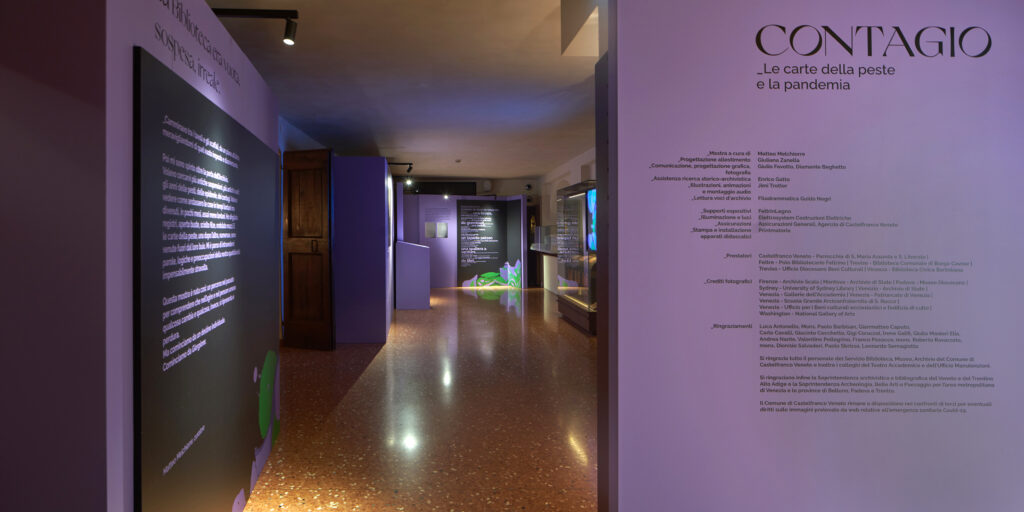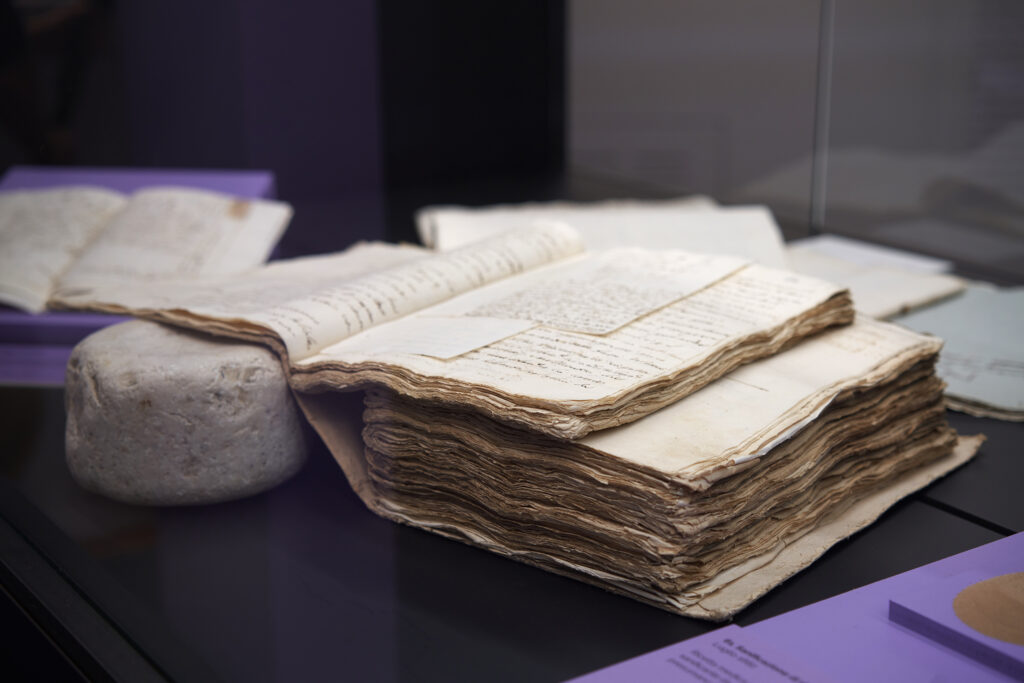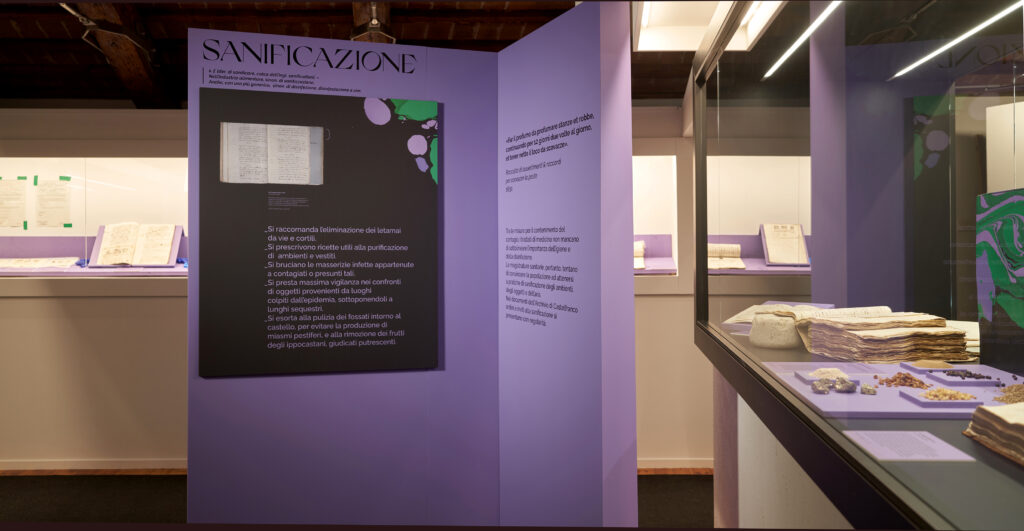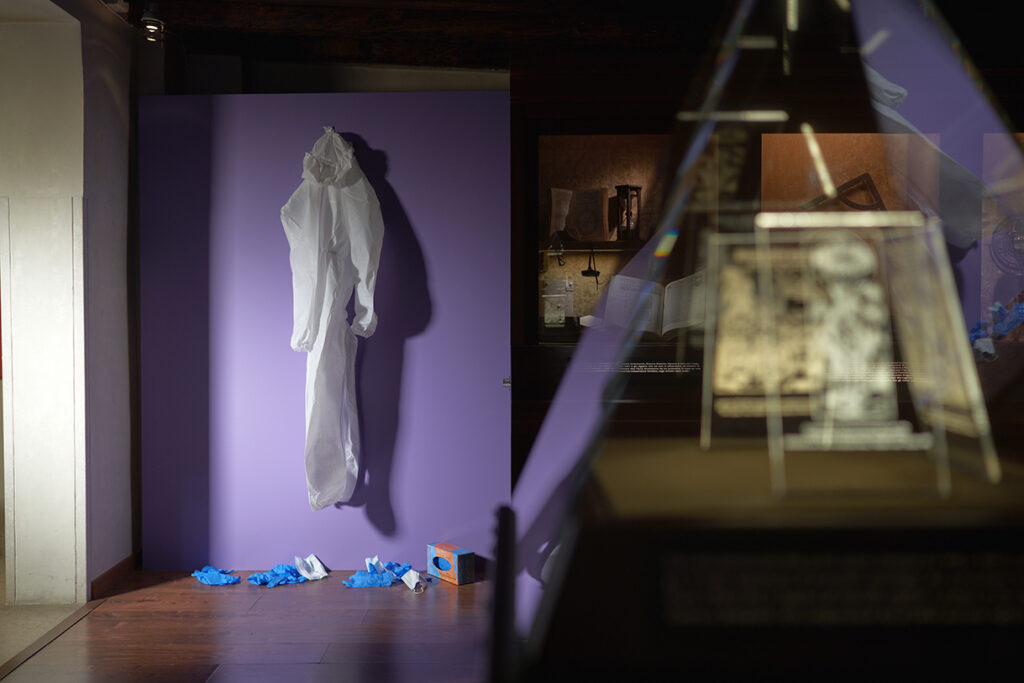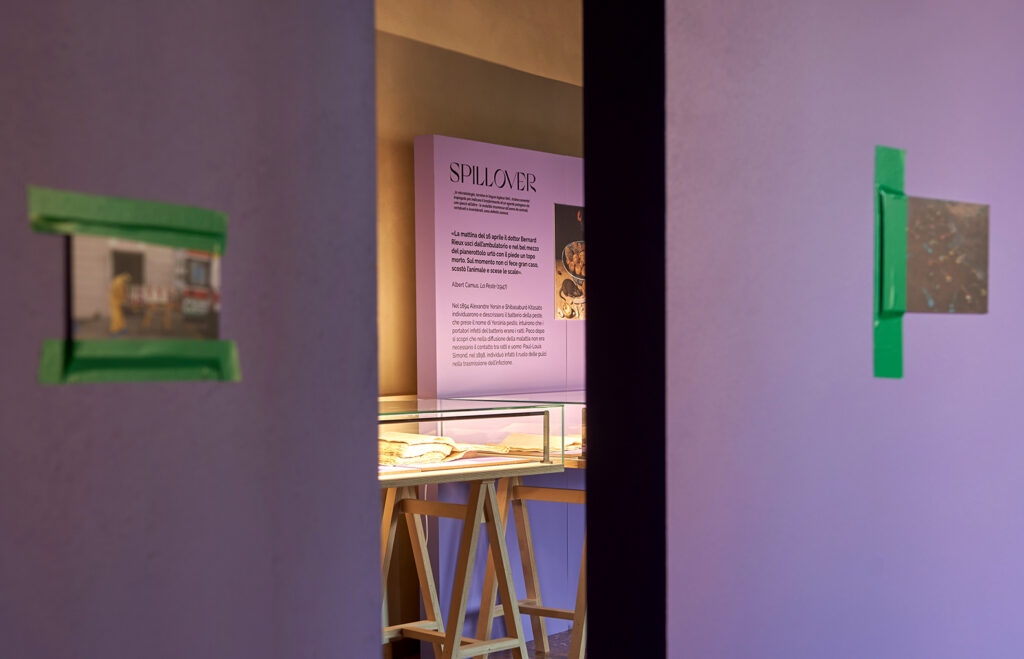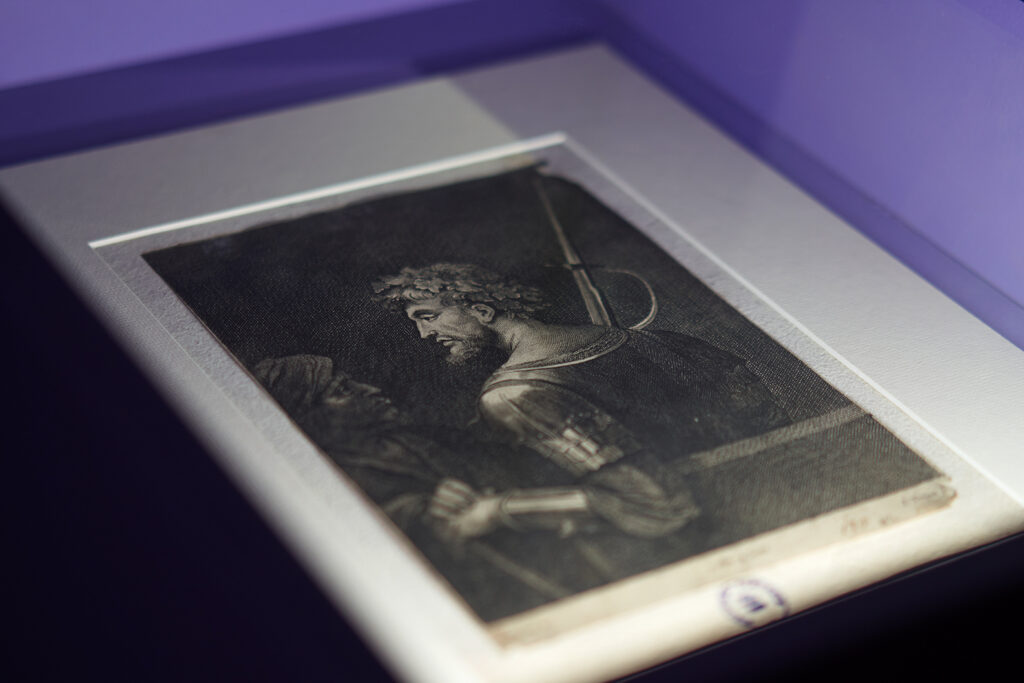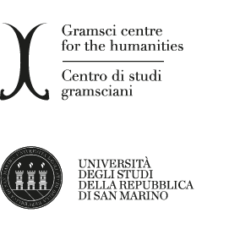“Contagio” is an exhibition of Castelfranco Veneto Historical Archive’s material about the plague and the Covid 19 pandemic. We interviewed Matteo Melchiorre, our scientific advisor and exhibit’s curator.
Dr. Melchiorre, the document is the focus of this exposition. But what are the different typologies that constitute the exhibition, and how do they interact, or rather, how do they contaminate each other?
You are right, the document is the heart of this exhibition. There are about a hundred archival documents on display for visitors. But in order to make them speak and to make them easier to understand, other types of “objects” interact with them in the exhibition: original paintings, graphic elaborations of iconographic subjects, ancient books, literary texts (from Camus to Orwell, from Dostoevsky to Boccaccio, from Defoe to Poe), contemporary photography, objects of material culture, audiovisual contents.
How much work went into researching the materials and organizing them to make the exhibition usable for visitors?
It was a tour de force. I started to get my hands inside the Archives during the first lockdown of 2020. The research group that I coordinated set to work on the documents in early May 2020 and the archival work went on non-stop until October. Already from the first scientific evidence, however, it was clear to me that the destination of the work in progress could be an exhibition. Therefore, we immediately moved on to discuss the exhibition design, the graphic concept, the photography, the loan requests, and so on.
Words that have become part of our everyday lexicon – such as distancing and lockdown – are the cardinal points of one of the sections of the exhibition. Is the orientation they sought to point to in the past the same one we attempt to follow in the present?
The words that form the exhibition’s guiding thread, 18 in all, are hidden in the documents themselves. Most of these words, of course, are our words, largely unknown to the lexicon of Modern Age documents. They are, however, in the essence of the “facts told” by the documents themselves. Now, I do not pretend to claim that an exact overlap is possible between the words-Covid-19 and the words of the epidemics of the ‘500, ‘600, ‘700. But at the level of logic, of spirit, of recurring structures we are indeed faced with orientations with significant similarities. Let us take the word “Distancing”, which as a noun is one of our words, but in a paper from the Castelfranco Archives of 1630 I find this recommendation: “stay ten steps away”. And the same goes for “Self-certifications” or “Monitoring”.
A historical reading of the pandemic is useful to better understand the historical moment we are living. In this sense, “Contagio” can provide more solid tools to the citizen who is completely plunged into the event, and into the uninterrupted flow of information – defined as infodemic – that characterizes it?
One of the objectives of this exhibition is precisely this: to provide critical tools for a reading of the pandemic that is opposed, if only in terms of approach, to the continuous flow of information. These tools are those that historical research can normally offer: no blunt answers, no spherical certainties and no full colors, but rather questions, doubts and nuances. Among other things, I believe that by seeing represented, in the exhibition, historical circumstances that present analogies with the circumstances of the present moment, there is, thanks to that distancing of perspective that only the past and the things that have passed can offer, the possibility of taking a step out of the infodemic and elaborating keys of interpretation that I would like to define as “detoxified”.
What specific weight does contemporary photography have in the structure of the exhibition?
It has a considerable weight. From the very beginning it was clear to me that this exhibition needed contemporary photography and, mind you, not so much artistically conceived photography, but merely documentary photography, better still if without aesthetic implications, better still if documenting the ordinary in which we have been and are plunged. Some images of 2020 are destined to become epochal topoi. In short: I believed that in order to look at/read the charts of the plague we needed images of the pandemic. So much so that the following happened. The installation of these photographs in the exhibition was the very last installation operation. Well: when the photos went up, there was like a light that went on. Everything became eloquent. Dramatic. Truthful. Necessary. That moment of the junction between the two languages, archival documents and photography, was an unforgettable emotion.
Great care was taken in preparing the video presentation of “Contagio”, which was then broadcast live on the Giorgione Museum’s YouTube channel. Should the health emergency continue, could the video format make up for the impossibility of going to the museum in person?
This is what is unfortunately happening. The museum is closed, the exhibition can no longer be visited by the public. We are organizing in-depth meetings with important guests, and they are streamed on our channel. Not only that: right now we are recording some “pills” from the exhibition. These are very short videos, each of which touches on a theme of the exhibition itself. We will post them on our social channels. Right now, I’m not so keen on the idea of creating a virtual tour as such. I don’t feel like making the exhibition an entirely virtual object that can be explored online. I have hopes that in a few weeks people will be able to return to the Museum. If not, of course, it will be a virtual tour; and we will see if we can invent something to make it as incisive as the preparation video was.
Last November 29, the scientific advisor of GCSM – and therefore his colleague – Jeffrey Schnapp, participated in a dialogue on the museums of the future organized by the weekly magazine “L’Espresso”. According to the professor, there is a difference between analog and digital objects, that is, between the physicality of the object itself and the image that is returned to it. But, at the same time, between thesetwo dimensions there is a connection that must be interpreted. In the light of your experience with “Contagio”, do you have any considerations to make on this theme?
I fully agree with Prof. Jeffrey Schnapp. The physicality of the object is the physicality of the object, and it can be translated into an image through an interpretative link. As the curator of the Contàgion exhibition, I cannot ignore the power – aesthetic, material, evocative – of the document, the painting, the object of material culture “alive and well” in front of our eyes. It brings with it, in the direct experience of it, something irreducible and untranslatable. But it is still possible, and indeed, as today, necessary, to work precisely on the interpretation and representation of that irreducibility. The museum of the future, as well as the art of displaying in the future, cannot but pass through this challenge. It is a challenge as difficult as it is stimulating, which expands, in the field of museology but not only, the expressive potential to be brought into play.
What “idea” of exhibition did you have in mind? Is there any aspect of the exhibition project that proved unfeasible?
The idea is the one I have tried to describe so far: solid preliminary research; not simplifying the complex but making it comprehensible in its complexity; dialogue between languages; dialogue between eras. Any unworkable and unrealized aspects? More than one. I would have liked to have had on display the original of a painting that we could only have had in reproduction, I mean the Ideal City of the Gemäldegalerie of Berlin, attributed by some to Francesco di Giorgio Martini. To have a few more resources available for promotion and communication.
The exhibition will remain on display until next June 27. Given the anti-Covid 19 restrictions in force, is it likely that the duration of “Contagio” will be extended, or will the exhibition be shown again in the not too distant future?
The hope that the exhibition could be “moved” in the near future in some other location of the territory is not lacking. Unfortunately, at the moment, there are no possible extensions. According to the law, archival documents have a maximum exposure time for their preservation. They must go back to rest in the dark. Too bad, but it’s only fair.
